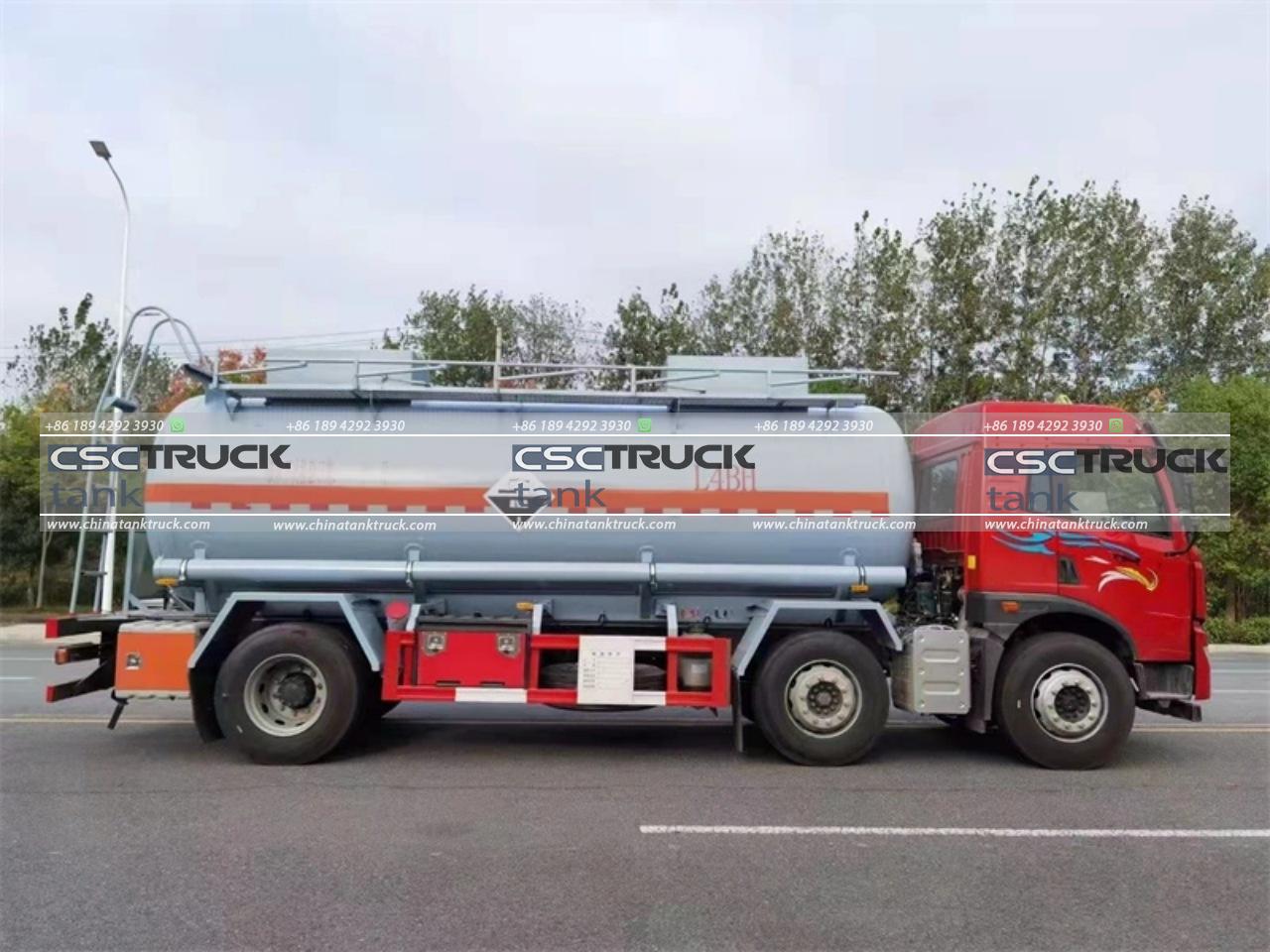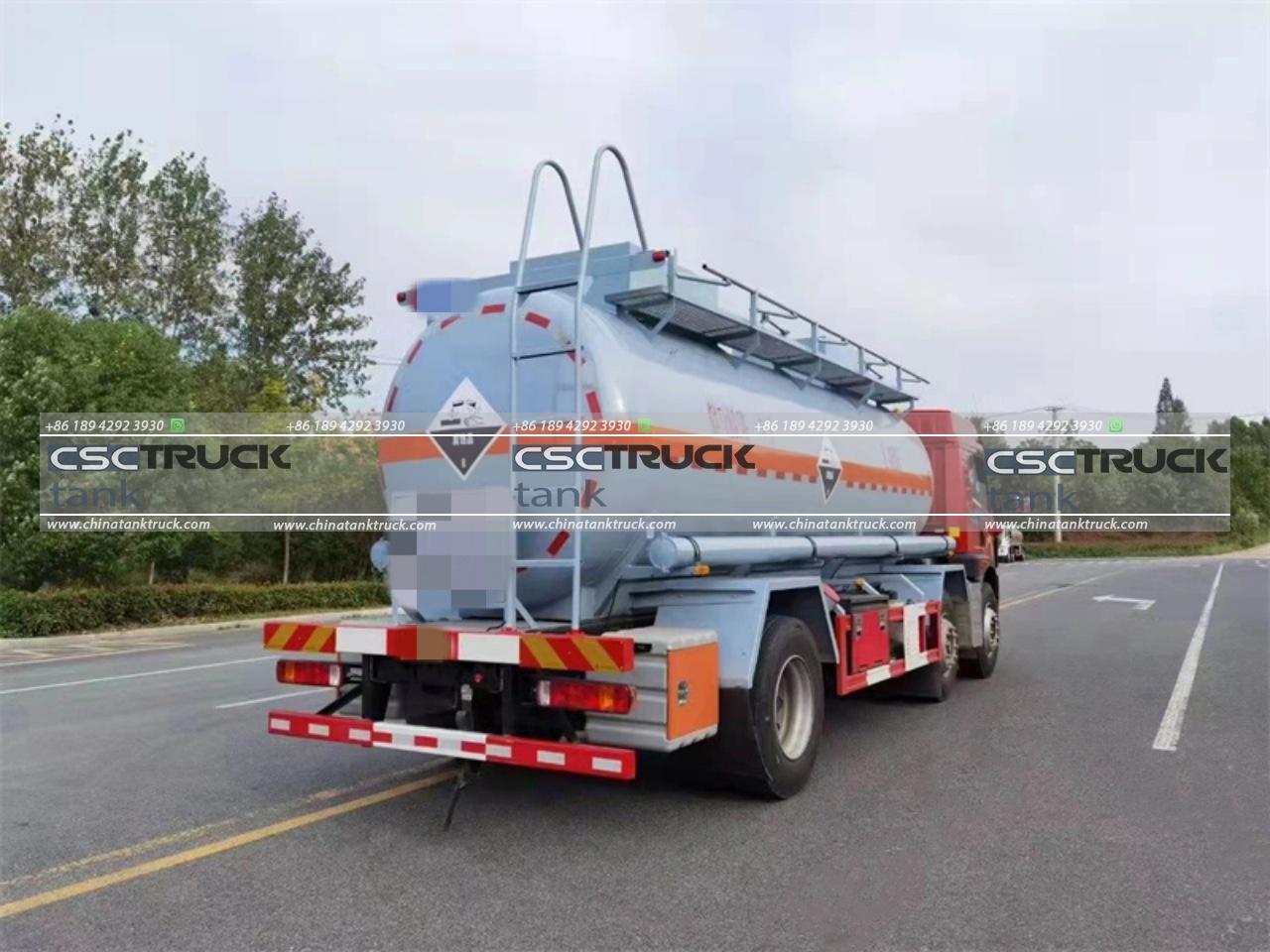Transporting hazardous materials, particularly corrosive substances, demands stringent safety protocols and specialized equipment to prevent accidents and environmental contamination. Corrosive tank truck logistics, therefore, is a critical aspect of hazardous materials transportation, involving the meticulous handling, transportation, and delivery of these dangerous goods. This article delves into the complexities of corrosive tank truck logistics, emphasizing the importance of safety, regulatory compliance, and technological advancements in ensuring the secure transport of hazardous materials.
Understanding Corrosive Materials
Corrosive materials, as defined by the U.S. Department of Transportation (DOT), are substances that cause visible destruction or irreversible damage to living tissue or materials at the site of contact. These include acids like sulfuric acid, hydrochloric acid, and bases such as sodium hydroxide. The hazardous nature of these materials necessitates the use of specialized tank trucks and adherence to rigorous safety standards to mitigate risks during transportation.
The Role of Corrosive Tank Trucks
Corrosive tank trucks are specifically designed to safely transport corrosive substances. These trucks feature tanks made from materials resistant to corrosion, such as stainless steel or specially coated carbon steel, to prevent the tank’s degradation and leakage of hazardous materials. The design also includes robust sealing mechanisms, pressure relief systems, and secure loading and unloading features to ensure the integrity of the transported substance throughout the journey.

Safety Protocols and Measures
1. Driver Training and Certification: Drivers operating corrosive tank trucks must undergo specialized training to handle hazardous materials safely. This training includes understanding the properties of corrosive substances, emergency response procedures, and safe driving practices. Certification from recognized bodies, such as the DOT or Occupational Safety and Health Administration (OSHA), is essential.
2. Tank Inspection and Maintenance: Regular inspection and maintenance of corrosive tank trucks are vital to prevent equipment failure. Inspections include checking the tank’s structural integrity, ensuring the proper functioning of safety valves, and verifying the condition of the tank’s lining. Maintenance schedules must be strictly followed, and any identified issues should be promptly addressed.
3. Personal Protective Equipment (PPE): Drivers and personnel involved in the loading and unloading process must wear appropriate PPE, including chemical-resistant gloves, goggles, and suits, to protect against accidental exposure to corrosive materials. Safety showers and eye wash stations should be readily available in case of accidental spills or splashes.
4. Emergency Response Plans: Comprehensive emergency response plans are crucial in the event of an accidental release of corrosive substances. These plans should outline the steps to be taken, including evacuation procedures, spill containment measures, and coordination with local emergency services. Regular drills should be conducted to ensure preparedness.
Regulatory Compliance
Compliance with national and international regulations is mandatory for the safe transport of corrosive materials. Key regulatory frameworks include:
1. Hazardous Materials Regulations (HMR): Enforced by the DOT, HMR provides guidelines for the classification, packaging, and labeling of hazardous materials, including corrosives. It also outlines requirements for training, security plans, and incident reporting.
2. International Maritime Dangerous Goods (IMDG) Code: For international shipments, the IMDG Code governs the transportation of hazardous materials by sea. It ensures that corrosive substances are safely packed, labeled, and documented to prevent accidents during maritime transport.
3. European Agreement Concerning the International Carriage of Dangerous Goods by Road (ADR): The ADR outlines the safe transportation of hazardous materials by road across Europe. It includes specifications for vehicle construction, driver training, and emergency response procedures.
Technological Advancements in Corrosive Tank Truck Logistics
Technological advancements play a crucial role in enhancing the safety and efficiency of corrosive tank truck logistics. Innovations include:
1. Real-Time Monitoring Systems: Advanced GPS and telematics systems allow real-time monitoring of corrosive tank trucks, providing data on the vehicle’s location, speed, and condition. Sensors can also monitor the tank’s internal pressure and temperature, alerting drivers and fleet managers to potential issues before they escalate.
2. Automated Loading and Unloading Systems: Automation in the loading and unloading process reduces human error and exposure to hazardous materials. Automated systems ensure precise handling and transfer of corrosive substances, minimizing the risk of spills and accidents.
3. Enhanced Material Coatings: Research into advanced coatings for tank interiors continues to improve the durability and resistance of tanks against highly corrosive substances. These coatings extend the lifespan of the tanks and reduce the frequency of maintenance.
4. Predictive Maintenance: Utilizing data analytics and machine learning, predictive maintenance systems can forecast potential equipment failures based on historical data and usage patterns. This proactive approach ensures timely maintenance and reduces the likelihood of unexpected breakdowns.

Environmental and Health Considerations
The transportation of corrosive materials poses significant environmental and health risks. Accidental spills can lead to soil and water contamination, posing severe threats to ecosystems and human health. Therefore, environmental protection measures are integral to corrosive tank truck logistics. These measures include:
1. Spill Containment Systems: Trucks should be equipped with spill containment systems to prevent the spread of corrosive substances in case of a leak. This includes bunded areas, drip trays, and absorbent materials.
2. Waste Management: Proper disposal of contaminated materials and waste generated during maintenance and cleaning processes is essential. Waste should be treated and disposed of according to environmental regulations to prevent pollution.
3. Community Awareness Programs: Educating communities along transportation routes about the potential hazards and emergency procedures can enhance public safety and preparedness in the event of an accident.
Conclusion
Corrosive tank truck logistics is a highly specialized field that demands a comprehensive approach to safety, regulatory compliance, and technological innovation. The safe transport of corrosive materials hinges on meticulous planning, robust equipment, and the continuous advancement of safety protocols and technologies. By prioritizing these elements, the industry can mitigate risks, protect the environment, and ensure the safe delivery of hazardous materials, ultimately contributing to a safer and more sustainable logistics network.

